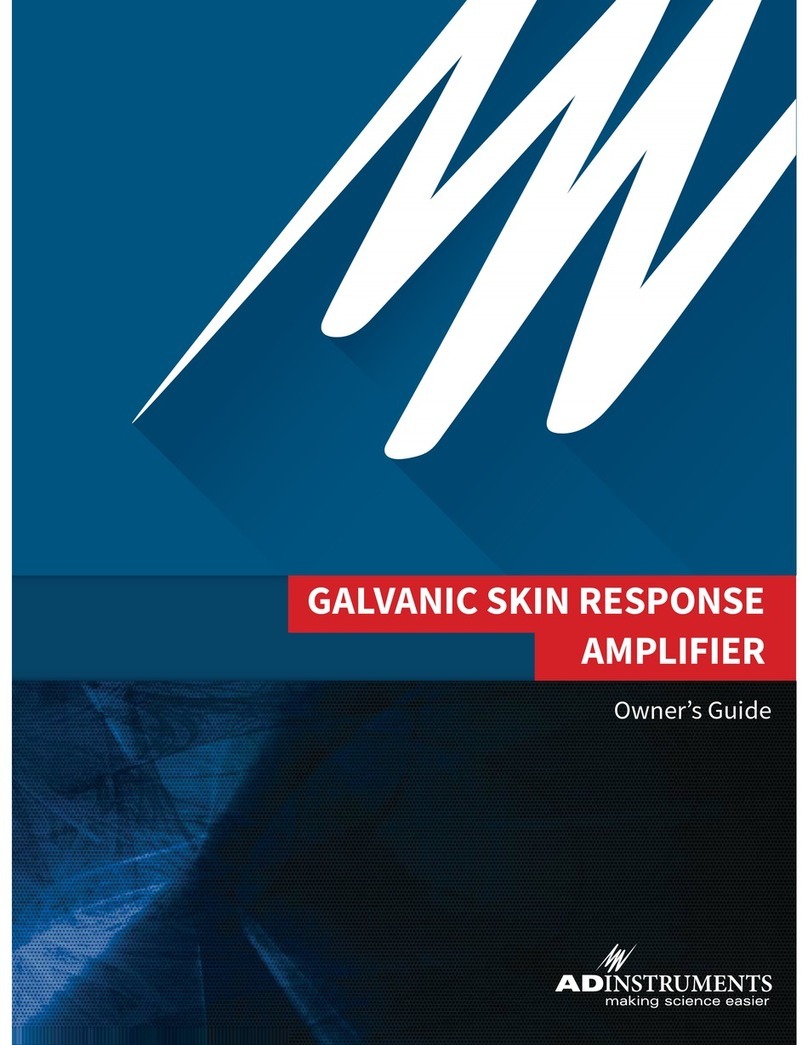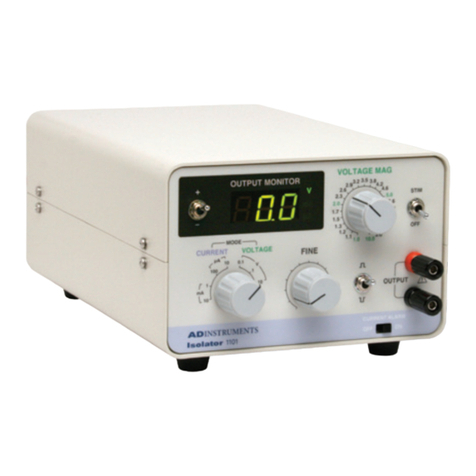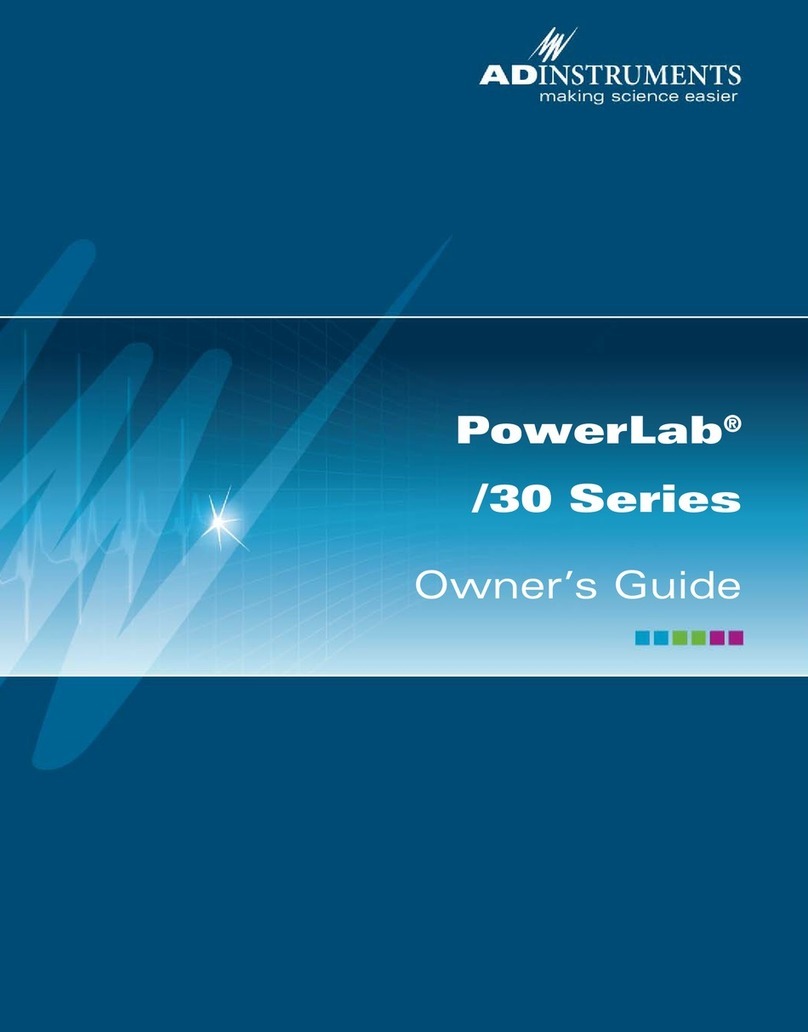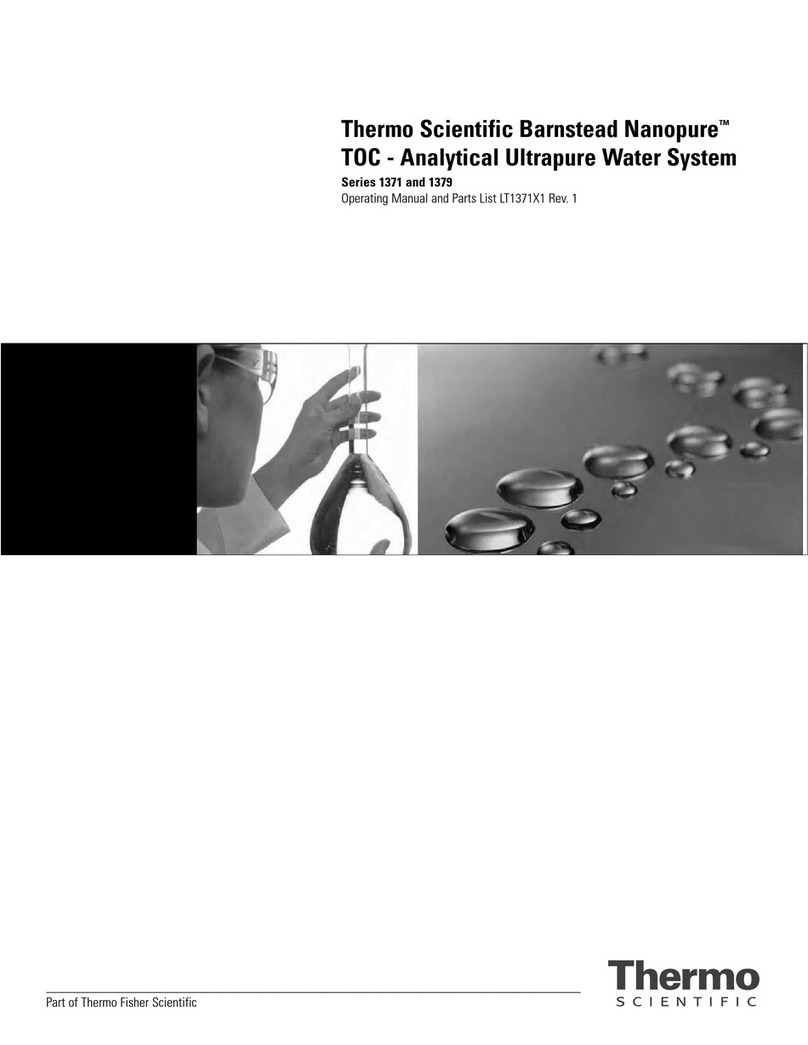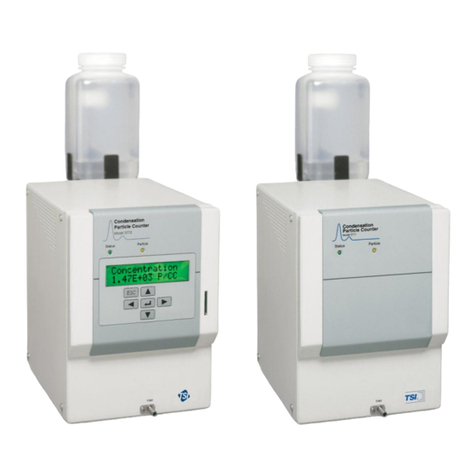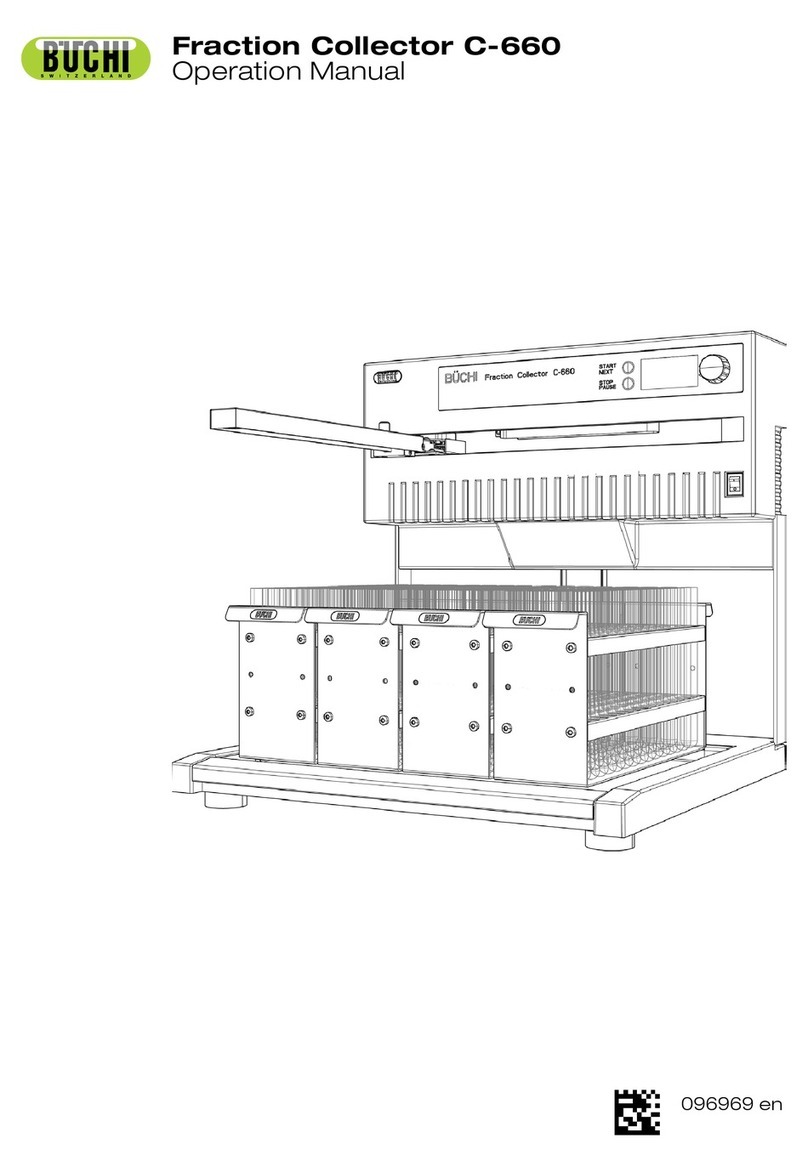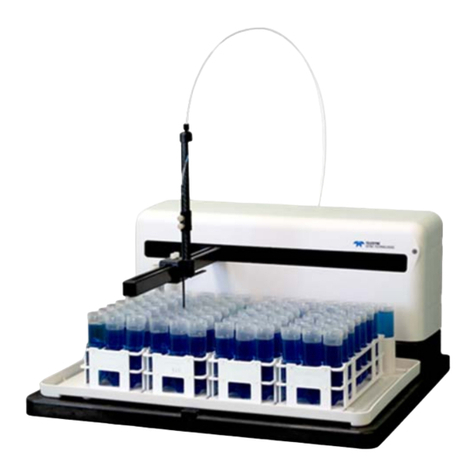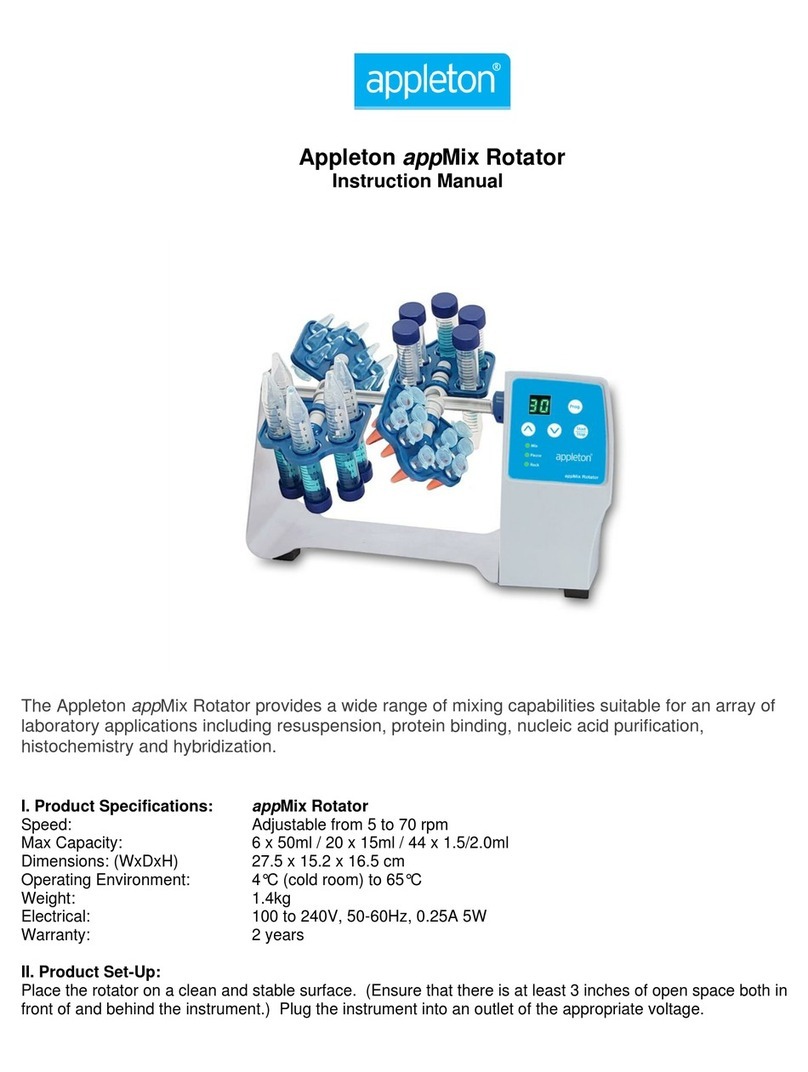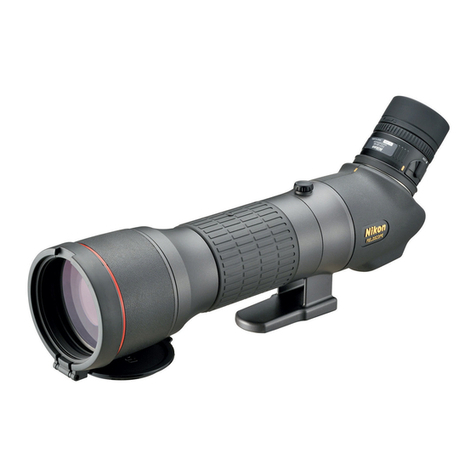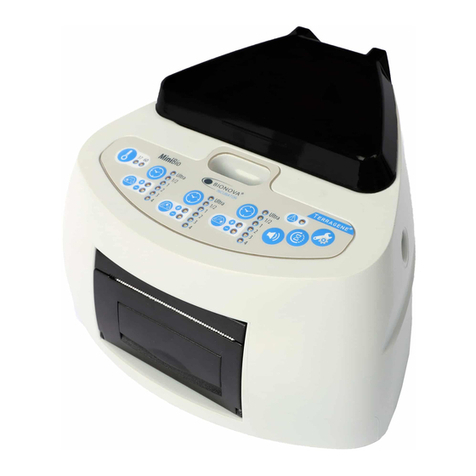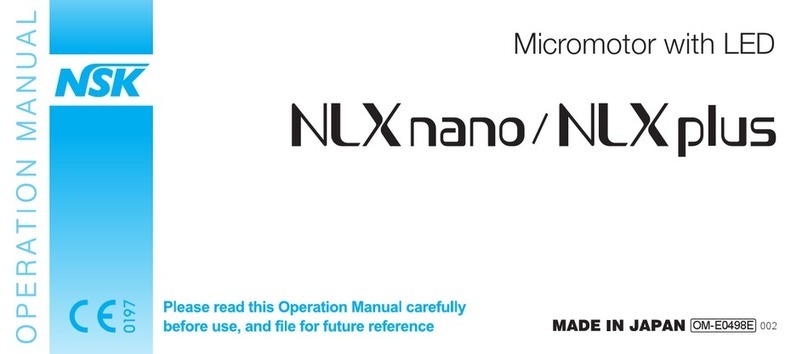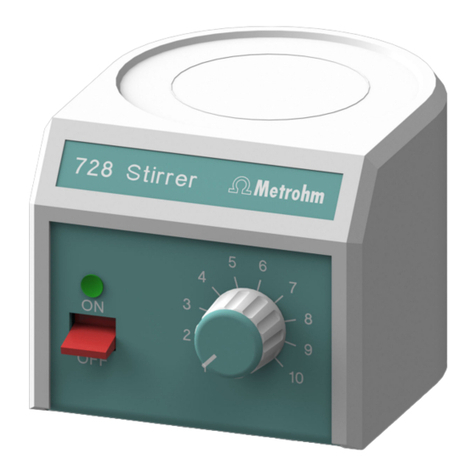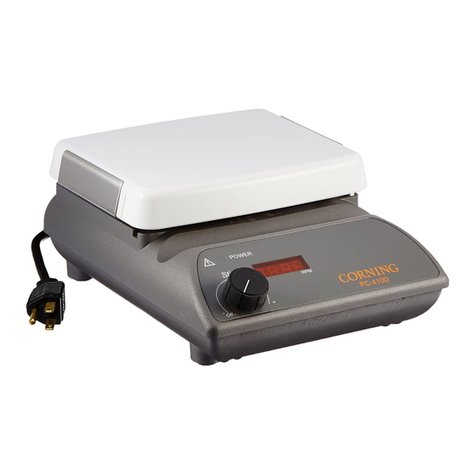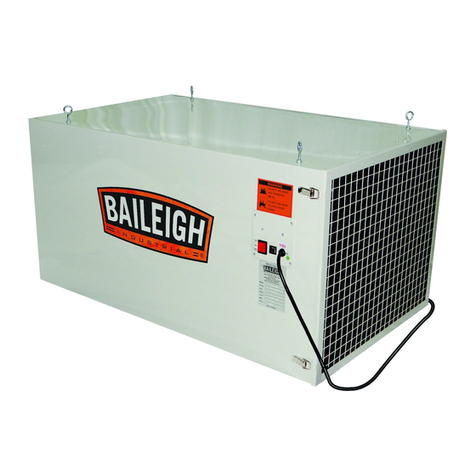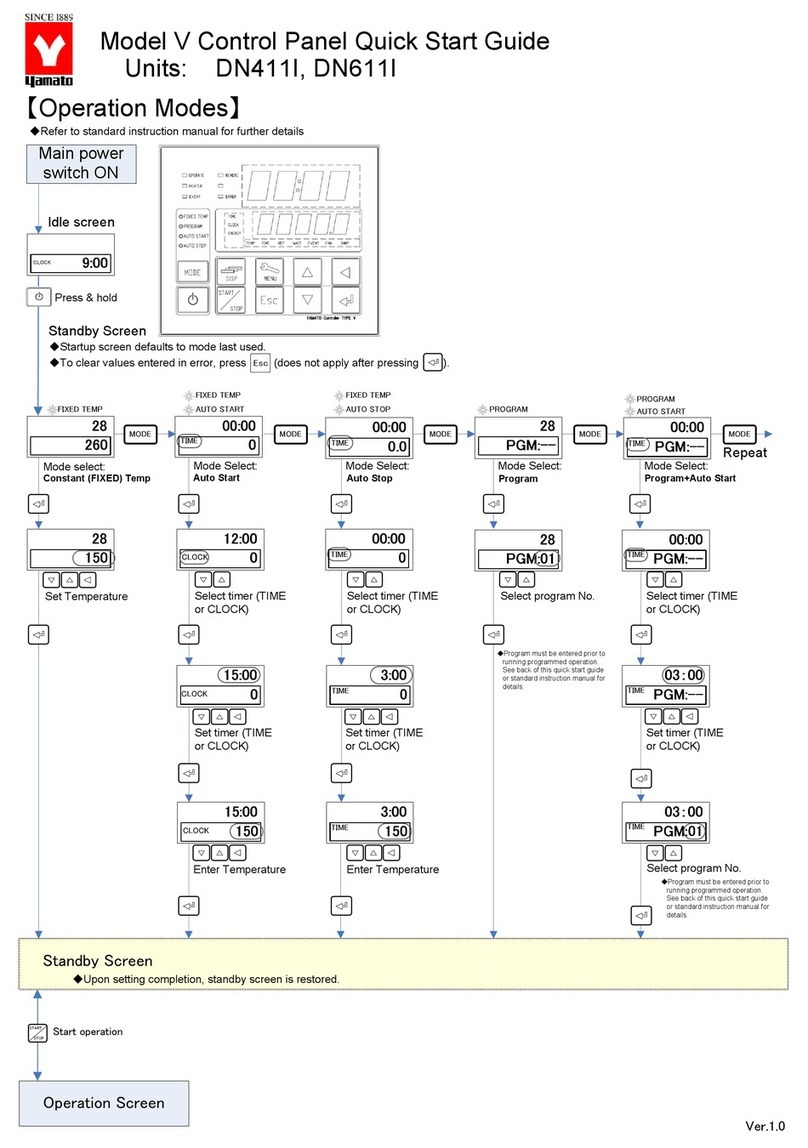ADInstruments Bridge Amp User manual

Artisan Technology Group is your source for quality
new and certied-used/pre-owned equipment
• FAST SHIPPING AND
DELIVERY
• TENS OF THOUSANDS OF
IN-STOCK ITEMS
• EQUIPMENT DEMOS
• HUNDREDS OF
MANUFACTURERS
SUPPORTED
• LEASING/MONTHLY
RENTALS
• ITAR CERTIFIED
SECURE ASSET SOLUTIONS
SERVICE CENTER REPAIRS
Experienced engineers and technicians on staff
at our full-service, in-house repair center
WE BUY USED EQUIPMENT
Sell your excess, underutilized, and idle used equipment
We also offer credit for buy-backs and trade-ins
www.artisantg.com/WeBuyEquipment
REMOTE INSPECTION
Remotely inspect equipment before purchasing with
our interactive website at www.instraview.com
LOOKING FOR MORE INFORMATION?
Visit us on the web at www.artisantg.com for more
information on price quotations, drivers, technical
specications, manuals, and documentation
Contact us: (888) 88-SOURCE | sales@artisantg.com | www.artisantg.com
SM
View
Instra

Bridge Amp
Owner’s Guide
Artisan Technology Group - Quality Instrumentation ... Guaranteed | (888) 88-SOURCE | www.artisantg.com

Bridge Amp
Owner’s Guide
ii
This document was, as far as possible, accurate at the time of release. However,
changes may have been made to the software and hardware it describes since
then. ADInstruments Pty Ltd reserves the right to alter specifications as
required. Late-breaking information may be supplied separately.
Trademarks of ADInstruments
PowerLab
®
, LabTutor
®
and MacLab
®
are registered trademarks of ADInstruments
Pty Ltd. The names of specific recording units, such as PowerLab 8/30, are
trademarks of ADInstruments Pty Ltd. LabChart, Chart and Scope (application
programs) are trademarks of ADInstruments Pty Ltd.
Other Trademarks
Apple, Mac and Macintosh are registered trademarks of Apple Computer, Inc.
Windows, Windows XP and Windows Vista are either registered trademarks or
trademarks of Microsoft Corporation.
All other trademarks are the property of their respective owners.
Product: ML221 Bridge Amp; ML224 Quad Bridge Amp;
ML228 Octal Bridge Amp
Document Number: U-ML221-OG-002B
Part Number: 4708
Copyright © February 2008 ADInstruments Pty Ltd.
Unit 13, 22 Lexington Drive, Bella Vista, NSW 2153, Australia
All rights reserved. No part of this document may be reproduced by any means
without the prior written permission of ADInstruments Pty Ltd.
Web: www.adinstruments.com
Documentation: [email protected]
ADInstruments Pty Ltd. ISO 9001:2000 Certified Quality Management System
Reg. No. 1053
Artisan Technology Group - Quality Instrumentation ... Guaranteed | (888) 88-SOURCE | www.artisantg.com

Contents
iii
Contents
Safety Notes 5
1 Overview 13
How to Use This Guide. . . . . . . . . . . . . . . . . . . . . . . . . . . . . . . . 14
Checking the Front-end. . . . . . . . . . . . . . . . . . . . . . . . . . . . . . 14
Front-end Fundamentals . . . . . . . . . . . . . . . . . . . . . . . . . . . . . 14
The Front-end . . . . . . . . . . . . . . . . . . . . . . . . . . . . . . . . . . . . . 15
The Front Panel . . . . . . . . . . . . . . . . . . . . . . . . . . . . . . . . . . 15
The Back Panel. . . . . . . . . . . . . . . . . . . . . . . . . . . . . . . . . . . 17
Using Transducers . . . . . . . . . . . . . . . . . . . . . . . . . . . . . . . . . . 18
Compatibility . . . . . . . . . . . . . . . . . . . . . . . . . . . . . . . . . . . 19
Suitable Transducers . . . . . . . . . . . . . . . . . . . . . . . . . . . . . . . 19
Unsuitable Transducers . . . . . . . . . . . . . . . . . . . . . . . . . . . . . 20
How Transducers Work . . . . . . . . . . . . . . . . . . . . . . . . . . . . . 20
Checking the Transducer . . . . . . . . . . . . . . . . . . . . . . . . . . . . . 21
2 Setting Up 23
PowerLab Requirements . . . . . . . . . . . . . . . . . . . . . . . . . . . . . . . 24
Software Requirements. . . . . . . . . . . . . . . . . . . . . . . . . . . . . . . . 24
Connecting to the PowerLab. . . . . . . . . . . . . . . . . . . . . . . . . . . . . 24
Multiple Front-ends . . . . . . . . . . . . . . . . . . . . . . . . . . . . . . . . 25
Using ADInstruments Programs . . . . . . . . . . . . . . . . . . . . . . . . . . 26
The Bridge Amp Dialog . . . . . . . . . . . . . . . . . . . . . . . . . . . . . 27
3 Adapting Transducers 35
Introduction . . . . . . . . . . . . . . . . . . . . . . . . . . . . . . . . . . . . . . 36
Transducer Adaptations . . . . . . . . . . . . . . . . . . . . . . . . . . . . . . . 36
Setting the Excitation Voltage . . . . . . . . . . . . . . . . . . . . . . . . . . 37
Wiring Up the Transducer . . . . . . . . . . . . . . . . . . . . . . . . . . . . 38
A Technical Aspects 41
Bridge Amp Operation . . . . . . . . . . . . . . . . . . . . . . . . . . . . . . . . 42
Technical Description . . . . . . . . . . . . . . . . . . . . . . . . . . . . . . . . . 43
Artisan Technology Group - Quality Instrumentation ... Guaranteed | (888) 88-SOURCE | www.artisantg.com

Bridge Amp
Owner’s Guide
iv
B Troubleshooting 45
Problems . . . . . . . . . . . . . . . . . . . . . . . . . . . . . . . . . . . . . . . .46
C Specifications 49
Single, Quad and Octal Bridge Amps (ML221, ML224 & ML228) . . . . . . . . 49
Index 51
Artisan Technology Group - Quality Instrumentation ... Guaranteed | (888) 88-SOURCE | www.artisantg.com

Safety Notes
5
Statement of Intended Use
All products manufactured by ADInstruments are intended for use in
teaching and research applications and environments only.
ADInstruments products are NOT intended to be used as medical
devices or in medical environments. That is, no product supplied by
ADInstruments is intended to be used to diagnose, treat or monitor a
subject. Furthermore no product is intended for the prevention, curing
or alleviation of disease, injury or handicap.
Where a product meets IEC 60601-1 it is under the principle that:
• it is a more rigorous standard than other standards that could be
chosen, and
• it provides a high safety level for subjects and operators.
The choice to meet IEC 60601-1 is in no way to be interpreted to mean
that a product:
• is a medical device,
• may be interpreted as a medical device, or
• is safe to be used as a medical device.
Safety Notes
Artisan Technology Group - Quality Instrumentation ... Guaranteed | (888) 88-SOURCE | www.artisantg.com

Bridge Amp
Owner’s Guide
6
Safety Symbols
Devices manufactured by ADInstruments that are designed for direct
connection to humans are tested to IEC 601-1:1998 (including
amendments 1 and 2) and 60601-1-2, and carry one or more of the
safety symbols below. These symbols appear next to those inputs and
output connectors that can be directly connected to human subjects.
The three symbols are:
• BF (body protected) symbol. This means that the input connectors
are suitable for connection to humans provided there is no direct
electrical connection to the heart.
• CF (cardiac protected) symbol. This means that the input
connectors are suitable for connection to human subjects even
when there is direct electrical connection to the heart.
• Warning symbol. The exclamation mark inside a triangle means
that the supplied documentation must be consulted for operating,
cautionary or safety information before using the device.
Further information is available on request.
Bio Amp Safety Instructions
The Bio Amp inputs displaying any of the safety symbols are
electrically isolated from the mains supply in order to prevent current
flow that may otherwise result in injury to the subject. Several points
must be observed for safe operation of the Bio Amp:
BF symbol: Body-
protected equipment
CF symbol: Cardiac-
protected equipment
!
Warning symbol: ‘see
documentation’
Artisan Technology Group - Quality Instrumentation ... Guaranteed | (888) 88-SOURCE | www.artisantg.com

Safety Notes
7
• All Bio Amp front-ends (except for the ML138 Octal Bio Amp) and
PowerLab units with a built-in Bio Amp are supplied with a 3-lead
or 5-lead Bio Amp subject cable and lead wire system. The ML138
Octal Bio Amp is supplied with unshielded lead wires (1.8 m). Bio
Amps are only safe for human connection if used with the
supplied subject cable and lead wires.
• All Bio Amp front-ends and PowerLab units with a built-in Bio
Amp are not defibrillator-protected. Using the Bio Amp to record
signals during defibrillator discharges may damage the input
stages of the amplifiers. This may result in a safety hazard.
• Never use damaged Bio Amp cables or leads. Damaged cables and
leads must always be replaced before any connection to humans is
made.
Isolated Stimulator Safety
Instructions
The Isolated Stimulator outputs of a front-end signal conditioner or
PowerLab with a built-in isolated stimulator are electrically isolated.
However, they can produce pulses of up to 100 V at up to 20 mA.
Injury can still occur from careless use of these devices. Several points
must be observed for safe operation of the Isolated Stimulator:
• The Isolated Stimulator output must only be used with the
supplied bar stimulus electrode.
• The Isolated Stimulator output must not be used with individual
(physically separate) stimulating electrodes.
• Stimulation must not be applied across the chest or head.
• Do not hold one electrode in each hand.
• Always use a suitable electrode cream or gel and proper skin
preparation to ensure a low-impedance electrode contact. Using
electrodes without electrode cream can result in burns to the skin
or discomfort for the subject.
• Subjects with implantable or external cardiac pacemakers, a
cardiac condition, or a history of epileptic episodes must not be
subject to electrical stimulation.
• Always commence stimulation at the lowest current setting and
slowly increase the current.
• Stop stimulation if the subject experiences pain or discomfort.
Artisan Technology Group - Quality Instrumentation ... Guaranteed | (888) 88-SOURCE | www.artisantg.com

Bridge Amp
Owner’s Guide
8
• Do not use faulty cables, or those that have exhibited intermittent
faults.
• Do not attempt to measure or record the Isolated Stimulator
waveform while connected to a subject using a PowerLab input or
any other piece of equipment that does not carry the appropriate
safety symbol (see Safety Symbols above).
Always check the status indicator on the front panel. It will always
flash green each time the stimulator delivers a current pulse. A yellow
flash indicates an ‘out-of-compliance’ (OOC) condition that may be
due to the electrode contact drying up. Always ensure that there is
good electrode contact at all times. Electrodes that are left on a subject
for some time need to be checked for dry contacts. An electrode
impedance meter can be used for this task.
• Always be alert for any adverse physiological effects in the subject.
At the first sign of a problem, stimulation must be stopped, either
from the software or by flicking down the safety switch on the
front panel of any built-in Isolated Stimulator or the ML180
Stimulus Isolator.
• The ML180 Stimulus Isolator is supplied with a special
transformer plug pack. The plug pack complies with medical
safety requirements. Therefore, under no circumstances should
any other transformer be used with the Stimulus Isolator. For a
replacement transformer plug pack please contact your nearest
ADInstruments representative.
General Safety Instructions
To achieve the optimal degree of subject and operator safety,
consideration should be given to the following guidelines when
setting up a PowerLab system either as stand-alone equipment or
when using PowerLab equipment in conjunction with other
equipment. Failure to do so may compromise the inherent safety
measures designed into PowerLab equipment. The following
guidelines are based on principles outlined in the international safety
standard IEC60601-1-1:
General requirements for safety - Collateral
standard: Safety requirements for medical systems
. Reference to this
standard is required when setting up a system for human connection.
Artisan Technology Group - Quality Instrumentation ... Guaranteed | (888) 88-SOURCE | www.artisantg.com

Safety Notes
9
PowerLab systems (and many other devices) require the connection of
a personal computer for operation. This personal computer should be
certified as complying with IEC60950 and should be located outside a
1.8 m radius from the subject (so that the subject cannot touch it while
connected to the system). Within this 1.8 m radius, only equipment
complying with IEC60601-1 should be present. Connecting a system
in this way obviates the provision of additional safety measures and
the measurement of leakage currents.
Accompanying documents for each piece of equipment in the system
should be thoroughly examined prior to connection of the system.
While it is not possible to cover all arrangements of equipment in a
system, some general guidelines for safe use of the equipment are
presented below:
• Any electrical equipment which is located within the SUBJECT
AREA should be approved to IEC60601-1.
• Only connect those parts of equipment that are marked as an
APPLIED PART to the subject. APPLIED PARTS may be
recognized by the BF or CF symbols which appear in the Safety
Symbols section of these Safety Notes.
• Only CF-rated APPLIED PARTS must be used for direct cardiac
connection.
• Never connect parts which are marked as an APPLIED PART to
those which are not marked as APPLIED PARTS.
• Do not touch the subject to which the PowerLab (or its peripherals)
is connected at the same time as making contact with parts of the
PowerLab (or its peripherals) that are not intended for contact to
the subject.
• Cleaning and sterilization of equipment should be performed in
accordance with manufacturer’s instructions. The isolation barrier
may be compromised if manufacturer’s cleaning instructions are
not followed.
• The ambient environment (such as the temperature and relative
humidity) of the system should be kept within the manufacturer’s
specified range or the isolation barrier may be compromised.
• The entry of liquids into equipment may also compromise the
isolation barrier. If spillage occurs, the manufacturer of the affected
equipment should be contacted before using the equipment.
Artisan Technology Group - Quality Instrumentation ... Guaranteed | (888) 88-SOURCE | www.artisantg.com

Bridge Amp
Owner’s Guide
10
• Many electrical systems (particularly those in metal enclosures)
depend upon the presence of a protective earth for electrical safety.
This is generally provided from the power outlet through a power
cord, but may also be supplied as a dedicated safety earth
conductor. Power cords should never be modified so as to remove
the earth connection. The integrity of the protective earth
connection between each piece of equipment and the protective
earth should be verified regularly by qualified personnel.
• Avoid using multiple portable socket-outlets (such as power
boards) where possible as they provide an inherently less safe
environment with respect to electrical hazards. Individual
connection of each piece of equipment to fixed mains socket-
outlets is the preferred means of connection.
If multiple portable socket outlets are used, they are subject to the
following constraints:
• They shall not be placed on the floor.
• Additional multiple portable socket outlets or extension cords
shall not be connected to the system.
• They shall only be used for supplying power to equipment which
is intended to form part of the system.
Cleaning and Sterilization
ADInstruments products may be wiped down with a lint free cloth
moistened with industrial methylated spirit. Refer to the
manufacturer’s guidelines or the Data Card supplied with transducers
and accessories for specific cleaning and sterilizing instructions.
Preventative Inspection and
Maintenance
PowerLab systems and ADInstruments front-ends are all
maintenance-free and do not require periodic calibration or
adjustment to ensure safe operation. Internal diagnostic software
performs system checks during power up and will report errors if a
significant problem is found. There is no need to open the instrument
for inspection or maintenance, and doing so within the warranty
period will void the warranty.
Artisan Technology Group - Quality Instrumentation ... Guaranteed | (888) 88-SOURCE | www.artisantg.com

Safety Notes
11
Your PowerLab system can be periodically checked for basic safety by
using an appropriate safety testing device. Tests such as earth leakage,
earth bond, insulation resistance, subject leakage and auxiliary
currents and power cable integrity can all be performed on the
PowerLab system without having to remove the covers. Follow the
instructions for the testing device if performing such tests.
If the PowerLab system is found not to comply with such testing you
should contact your PowerLab representative to arrange for the
equipment to be checked and serviced. Do not attempt to service the
device yourself.
Environment
Electronic components are susceptible to corrosive substances and
atmospheres, and must be kept away from laboratory chemicals.
Storage Conditions
• Temperature in the range 0–40 °C
• Non-condensing humidity in the range 0–95%.
Operating Conditions
• Temperature in the range 5–35 °C
• Non-condensing humidity in the range 0–90%.
Disposal
• Forward to recycling center or return to manufacturer.
Artisan Technology Group - Quality Instrumentation ... Guaranteed | (888) 88-SOURCE | www.artisantg.com

Bridge Amp
Owner’s Guide
12
Artisan Technology Group - Quality Instrumentation ... Guaranteed | (888) 88-SOURCE | www.artisantg.com

Chapter 1
Overview
13
The Bridge Amp is a modular device, in a family called front-ends,
designed to extend the capabilities of the PowerLab
®
system. The
Bridge Amp is designed to allow the PowerLab to connect to most DC
bridge transducers, including commonly available force transducers,
temperature probes, light meters, displacement transducers, pressure
transducers, and similar devices. This chapter provides an overview
of the various Bridge Amps, describes their basic features, and looks
at which transducers can be used with them.
1
Overview
Artisan Technology Group - Quality Instrumentation ... Guaranteed | (888) 88-SOURCE | www.artisantg.com

Bridge Amp
Owner’s Guide
14
How to Use This Guide
This owner’s guide describes how to set up and begin using your
Bridge Amp. The chapters give an overview of front-ends in general
and the Bridge Amp in particular, and discuss how to connect the
hardware, perform a simple power-up test, and use the Bridge Amp
with some ADInstruments programs. The appendices provide
technical information about the front-ends, and take a look at some
potential problems and their solutions.
At the end of this guide, you’ll find an index. Technical terms that are
not defined in the glossary of terms included with the owner’s guide
for your PowerLab are defined as they appear.
Checking the Front-end
Before connecting the Bridge Amp to anything, check it carefully for
signs of physical damage.
1. Check that there are no obvious signs of damage to the outside of
the front-end casing.
2. Check that there is no obvious sign of internal damage, such as
rattling. Pick up the front-end, tilt it gently from side to side, and
listen for anything that appears to be loose.
If you have found a problem, contact your authorized ADInstruments
representative immediately, and describe the problem. Arrangements
can be made to replace or repair the front-end.
Front-end Fundamentals
The PowerLab system consists of a recording unit and application
programs that run on the computer to which the unit is connected. It
is an integrated system of hardware and software designed to record,
display, and analyze experimental data. Your Bridge Amp is one of a
family of front-ends meant for use with your PowerLab system.
Front-ends are ancillary devices connected to the PowerLab recording
unit to extend the system’s capabilities. They provide additional
signal conditioning and other features, and extend the types of
experiments that you can conduct and the data you can record. All
ADInstruments front-ends are designed to be operated under full
software control. No knobs, dials or switches are needed, although
some may be provided for reasons of convenience or safety.
Artisan Technology Group - Quality Instrumentation ... Guaranteed | (888) 88-SOURCE | www.artisantg.com

Chapter 1
Overview
15
The PowerLab controls front-ends through an expansion connector
called the I
2
C (eye-squared-sea) bus. Each new front-end added to the
system connects to the back of the previous front-end, in a simple
daisy-chain structure. This makes it very easy to add front-ends to the
system or to transfer them between PowerLabs. In general, each
front-end requires one analog input of the PowerLab. (Note that the
Quad Bridge Amp acts as if it were four individual Bridge Amps and
the Octal Bridge Amp, as if it were eight.)
Front-ends are automatically recognized by the PowerLab system.
Any front-end feature, such as gain or filtering, is combined with the
appropriate features of the software and presented as a single set of
software controls. This seamless integration of front-ends greatly
increases the flexibility and ease of use of the PowerLab system.
The Front-end
The Bridge Amp is designed to allow the PowerLab to connect to most
DC bridge transducers, including commonly available force
transducers, temperature probes, light meters, displacement
transducers, pressure transducers, and similar devices. There are
several models of Bridge Amp. The Bridge Amp provides just one
connection for a bridge transducer, the Quad Bridge Amp provides
four connections for bridge transducers and the Octal Bridge Amp
provides eight connections for bridge transducers.
Grass transducers can connect to any ADInstruments Bridge Amp
using a Grass adapter cable available from ADInstruments. Use the
MLAC11 Grass Adapter Cable to connect a Grass transducer to the
ML221, ML224 or ML228 Bridge Amp.
The rest of this chapter contains general information about the
features, connections and indicators of the Bridge Amps. More
detailed information can be found in the technical appendices.
The Front Panel
The front panel of a Bridge Amp has a single socket for a transducer
connection, a status indicator light and an overload indicator light.
The front panel of a Quad or Octal Bridge Amp has four or eight
transducer connections, respectively, each of which has a status
indicator light and an overload indicator light.
Artisan Technology Group - Quality Instrumentation ... Guaranteed | (888) 88-SOURCE | www.artisantg.com

Bridge Amp
Owner’s Guide
16
The Input Socket
Transducers are connected to a Bridge Amp using the eight-pin DIN
sockets on the front panel. The sockets provide terminals for
supplying a transducer with power and for receiving the transducer
output. Front-ends are supplied with DIN plug kits (one per
connection) to be fitted to those transducers that lack them. The
connection is discussed in more detail later.
The Status Indicator
The Status indicator of the Bridge Amp is located at the bottom right
of the front panel, and the Status indicators of the Quad Bridge Amp
and Octal Bridge Amp are located beneath each connector on the front
panel. When an ADInstruments program such as LabChart starts up,
the Status indicator light should glow green, indicating that the
program has found the front-end, checked and selected it, and is
ready to use it. If the light does not glow when the program is
running, this indicates either that the front-end is not connected
properly or that there is a software or hardware problem.
ML221 Bridge Amp
ML228 Octal Bridge Amp
ML224 Quad Bridge Amp
Figure 1–1
The front panels of the
Bridge Amps
Artisan Technology Group - Quality Instrumentation ... Guaranteed | (888) 88-SOURCE | www.artisantg.com

Chapter 1
Overview
17
The Overload Indicator
The Overload indicator is located on the left side of the front panel of
the Bridge Amp and to the right of the Status indicator on the Quad
and Octal Bridge Amps.
The Overload indicator is normally off. If the indicator lights when a
transducer is attached, it indicates an out-of-compliance condition
(meaning that the excitation voltage drops because too much current
is being drawn by the load). When the Bridge Amp detects a problem
with the transducer (for instance a wiring fault with a transducer
causing a short-circuit), the overload indicator will glow yellow or
amber and will remain on until the fault is rectified.
If the overload indicator remains on with a transducer attached, the
transducer should be removed immediately to minimize the risk of
damage to the transducer. Check the transducer wiring carefully
before re-attaching the transducer. If the fault persists, refer to the
Troubleshooting section of this Owner’s Guide.
For the overload indicator to function, power must be applied to the
Bridge Amp via a PowerLab. LabChart software does not need to be
loaded.
When a software application is running and a channel is being zeroed,
the Status indicators for the other channels should temporarily be off.
The Back Panel
The back panel of the Bridge Amp provides all the sockets required to
connect the Bridge Amp to the PowerLab and to other front-ends.
I
2
C Input and Output Sockets
Two nine-pin sockets are used to communicate with the PowerLab
(they are marked ‘I
2
C Bus’: a ‘bus’ is simply information-transmission
circuitry such as cables and connectors). These sockets allow multiple
front-ends to be used independently with one PowerLab. Power and
control signals to the front-ends come from the PowerLab. Many
front-ends can be connected to the system, in series, output to input,
providing there is the same number of channel inputs available on the
PowerLab (this is discussed in more detail in the next chapter).
Artisan Technology Group - Quality Instrumentation ... Guaranteed | (888) 88-SOURCE | www.artisantg.com

Bridge Amp
Owner’s Guide
18
Analog Output Sockets
BNC sockets on the back panel of the Bridge Amp provide the signal
outputs to connect to the analog input sockets on the front of the
PowerLab. The sockets are labelled Signal Output on a Bridge Amp
and Output 1 to Output 4 or 8 on Quad or Octal Bridge Amps. You
don’t have to match the channel numbers when connecting outputs to
inputs, but it helps to prevent confusion if you do. A BNC-to-BNC
cable is supplied for each connection.
Using Transducers
Bridge Amps are designed to allow the PowerLab to connect to most
DC bridge transducers, including commonly available force, pressure,
and displacement transducers, temperature probes, light meters, and
similar devices. They are capable of supporting various powered
transducers, and certain low-impedance unpowered (or self-powered)
transducers.
ML221 Bridge Amp
ML224 Quad Bridge Amp
ML228 Octal Bridge Amp
Figure 1–2
The back panels of the
Bridge Amps
Artisan Technology Group - Quality Instrumentation ... Guaranteed | (888) 88-SOURCE | www.artisantg.com

Chapter 1
Overview
19
However, because transducers vary in sensitivity and suitability, you
should read the following sections before connecting a transducer to a
Bridge Amp.
Compatibility
Transducers which operate with the ML110, ML112, ML118, ML119
will operate with the ML22x Bridge Amps. The ML110 and ML112
amplifiers had provision for increasing offsetting resolution via an
optional resistor installed in the transducer connector. Transducers
which have this offsetting resistor fitted will operate with the ML22x
Bridge Amps without modification.
Suitable Transducers
The Bridge Amps are designed to connect to transducers that require
DC excitation voltages, such as DC strain-gauge or semiconductor
transducers.
If you are uncertain about the suitability of your transducer, please
provide ADInstruments with an accurate circuit of the transducer and
a sample, and we will see about testing the device for compatibility.
Half-bridge transducers will need to be wired up with compensating
resistors before they can be used with any of the Bridge Amps
(see Chapter 3).
DC Strain-gauge
. These are full-bridge or half-bridge transducers
requiring a DC excitation voltage, and output voltages of less than
200 mV full scale. They include strain-gauge force transducers,
temperature transducers and pressure transducers.
Semiconductor
. These are powered transducers typically used for
light, displacement, and temperature measurements, giving output
voltages less than 200 mV full scale.
Generally, a Bridge Amp can be used with transducers that:
• require DC excitation voltages, not AC
• have transducer output voltages less than 5 V full scale
• have transducer impedances less than 10 k
Ω
.
Artisan Technology Group - Quality Instrumentation ... Guaranteed | (888) 88-SOURCE | www.artisantg.com
Table of contents
Other ADInstruments Laboratory Equipment manuals
